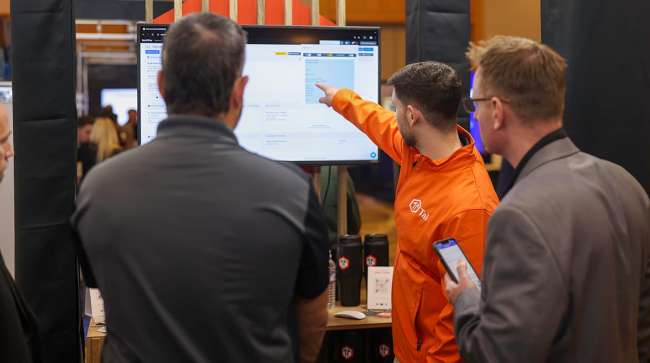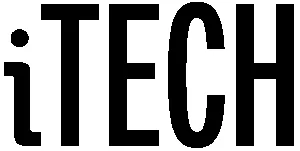TMS Products for Freight Brokerages Focus on Efficiency

[Stay on top of transportation news: Get TTNews in your inbox.]
Transportation management systems have evolved to address the specific pain points of freight brokers as they bridge shippers’ needs with carrier capacity.
“Brokers need the ability to maintain relationships with hundreds of carriers,” said Tom McLeod, CEO of McLeod Software. “If the broker has tools to find the freight and match it up with the carriers more quickly, that improves productivity.”
The company’s PowerBroker software can help brokers streamline load matching, automate routine tasks, optimize decision-making and support customer relationships.
Configurability within a TMS is as essential for brokers as it is for carriers.
“The key is not asking if my system can work in this TMS but if the TMS can adapt to my system,” said Jesse Carmichael, product manager for Descartes Aljex, a TMS vendor for brokers from Descartes Systems. “We have to be flexible in allowing them to not only do the common workflows but also allow them to configure the system to meet their needs.”

Mitchell
Freight brokerage operations are distinct from those of shippers, carriers or even freight forwarders, said Walter Mitchell, CEO of Tai Software.
“Specifically, brokers are different because they are managing two very different types of relationships, one with the carrier and the other with the shipper,” he said. “In contrast, a carrier is managing the operational efficiency of equipment and a relationship with a shipper/broker. The needs are very different.”
Eric Rempel, chief innovation officer at Redwood Logistics, said brokers must deal with a wide range of carrier partners with different capabilities and communication preferences.
“The biggest challenge is the size of the industry and the fragmentation,” Rempel said. “You’re dealing with sophisticated carriers where you see their logos all the time on the road, and smaller regional ones that are the long tail with five or less trucks.”
Ideally, brokers can reduce friction for their carrier partners by drawing on data to feed them loads that allow both the carrier and the broker to turn a healthy profit.
Rempel said staying current on market conditions is crucial for brokers since they are simultaneously trying to sell service and source capacity.

READ MORE
► TMS Software Providers Tailor Offerings to Meet Fleets' Needs
► How AI Is Shaping the Next Generation of TMS Development
► TMS Products for Freight Brokerages Focus on Efficiency
► Cybersecurity Firm Irdeto Turns Focus to Trucking
► Dysart: A Cybersecurity Playbook for Trucking in 2025
The functionality that brokers need from a TMS can also vary depending on brokers’ service areas, such as full truckload, less-than-truckload or other specialties. Brokers dealing with refrigerated or pharmaceutical loads must include essential specifications such as temperature control and lot tracking, which they can do within McLeod’s TMS.
“They have the ability to add that information right to the order and transmit it to the carrier,” McLeod said. “It can also go out to the driver through our system to allow the broker to communicate directly to the driver’s smartphone.”
LTL carriers can utilize Tai Software’s Tariff Wizard to manage contracts, assign margins and calculate rates and accessorials. For full truckload moves, users can access an FTL quoting page with market intelligence, tap into historical data and utilize direct integrations with load boards to make pricing decisions.
Pricing intelligence is especially important for freight brokers.
“It’s about having the right information at the right time,” McLeod said, adding that effective data integration transforms a broker’s decision-making from reactive to proactive.
McLeod’s TMS platform integrates with load boards and tracks brokers’ prior relationships with carriers as well as historical carrier performance. As a result, brokers can see which carriers are most reliable for specific lanes and are instantly notified of available options, which can directly impact profitability and customer satisfaction.
“Not only do I want to cover it quickly, I want to cover it at the best margin. We’re serving up the right information at the right time to help the users make a better decision,” McLeod said. “If a broker can get insights based on historical data — who handled a load in the past, at what rate — they can make a more informed choice on carriers.”
Carriers with a brokerage arm can use the TMS to analyze cargo, driver and equipment variables to determine which loads best fit their networks and which are best suited for brokerage. “Factors that impact planning decisions include freight rates, driver hours of service and deadhead miles,” said Jay Delaney, director of product management for Magnus Technologies.
John Elliott of Load One demonstrates how onboard video combined with AI-enabled analytics can transform fleet safety. Tune in above or by going to RoadSigns.ttnews.com.
Brokers are always looking at their cost per load and how to do more with less and seeking ways to scale without having to expand their workforce. Automation through the TMS enables brokers to streamline manual or repetitive tasks, which also reduces the risk of human error.
“We’re removing the touchpoints to get to more exception management,” Descartes Aljex’s Carmichael said, adding that automation can help brokers make decisions faster.
Mitchell said Tai Software has also improved its connectivity through application programming interfaces, allowing brokers to integrate more seamlessly with their preferred systems while expanding functionality around key logistics processes like tracking, billing and payment workflows.
Brokers also need the ability to quickly adapt to shifting market conditions and adjust workflows if they take on new clients or service areas.
“Brokers are going to feel any change in economy and networks first. It takes time to get assets in place and for carriers to reposition their fleets, so brokers may need to be more nimble,” Carmichael said, adding that nearshoring, which has been increasing, is creating new demands for brokers.
Want more news? Listen to today's daily briefing above or go here for more info
With an agile and configurable TMS, brokers can add fields to support multi-currency, multi-leg trips and other complexities that come with cross-border operations.
“If you get caught in a system that can’t do that, you have two to three months of training employees on the new system,” Carmichael said.
One of the top concerns in the brokerage sector is fraud.
“Although the TMS doesn’t really solve those problems, we do incorporate those partners that can help limit your liability,” Carmichael said, adding that the TMS can provide checkpoints to require additional documentation or verification to help reduce risk.





